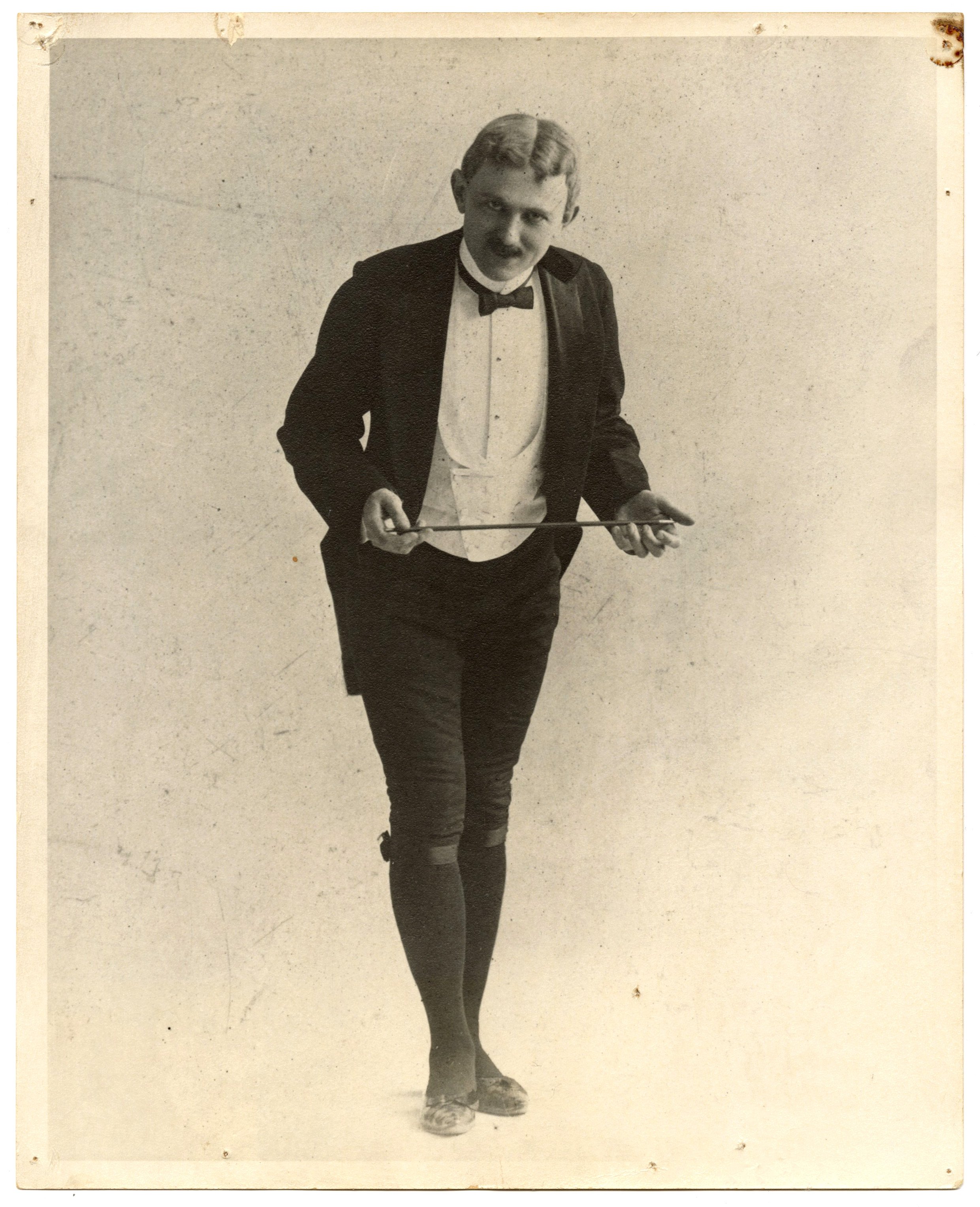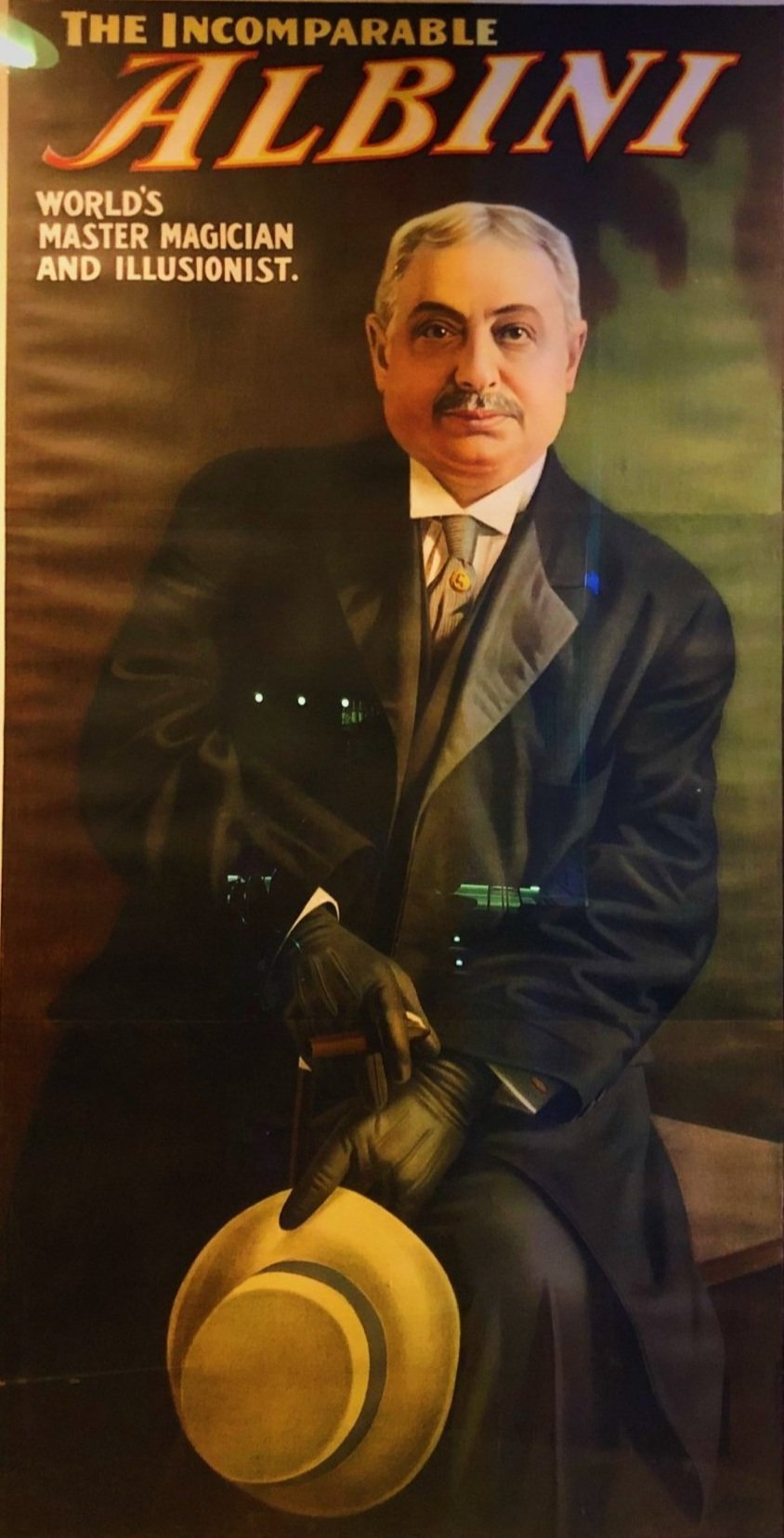
The Prince OF MAgic
By William Pack | Magician, Historian, and Educator, https://libraryprogramming.com/
image courtesy of Quicker than the Eye, https://www.quickerthantheeye.com/p/photographs/Portrait_of_Edward_Maro-7687Edward Maro
(Walter Truman Best)
B. September 25, 1869 - February 26, 1908
Lyceum and Chautauqua were forms of entertainment in the 19th and early 20th centuries. Originally, Lyceums organized lectures in areas of science, history, and art. Chautauqua began as a religious movement; the attendees came to hear inspiring lectures, entertainment, and bible study. The difference was that Lyceums were presented in lecture hall nine months a year. A Chautauqua was a short-term summer affair, 3 to 7 days, and presented under canvas.
Edward Maro was probably the greatest of all the Lyceum/Chautauqua magicians. He was certainly the first magician to appear in Lyceum programs around 1890.
Edward Maro was born Watler Truman Best on September 25, 1869, in Burlington, Vermont. When he was young, his father drowned. His father’s death made him the breadwinner of the family. Walter and his mother moved to Iowa, where he got a job as a photographer’s apprentice, with a wage of one dollar a week and board. While learning his trade, he stumbled upon an instruction book on how to play the guitar.
In the evenings, he taught himself to play, but he had never heard the sound of a guitar before this and was unsure if he was doing it right. A few years later, Walter moved to Kansas City to open his own freelance photography business. At one of his appointments, as he set up his equipment for a photo shoot, he heard a somewhat familiar sound, and he asked the woman of the house what the sound was. It was her daughter who was learning how to play the guitar.
Walter asked if he could listen, eventually asking to see the guitar. He began to play the guitar. The woman was so impressed she told him to forget about the photos and asked if he would tutor her daughter.
Not long after, he found the local music store and asked to see a guitar. He began to play. When he was finished, the owner asked if Walter would consider becoming a guitar instructor. Walter gave up photography and became a popular music teacher.
Walter lived in a boarding house. Often in the evenings he and the other boarders would congregate in the living room and share stories, or their talents. Walter would play the guitar. One evening, a boarder performed a simple card trick. Walter was astonished. Soon, he was overtaken by a new passion: magic.
In 1890, the influential magic figure Dr. A. M. Wilson encouraged Walter to move to Chicago. At this time, he changed his professional name to Edward Maro. In Chicago, Maro opened a guitar and mandolin school. The Chicago Lyceum Bureau quickly booked him as a musician, creating the Maro Saxophone Quartet, which was just one of many musical groups he organized during that time. At one of the performances, a band member failed to show up. To kill time, Maro presented a magic trick. The audience was enthusiastic, and soon, the Bureau requested more magic and less music.
Soon, he was overtaken by a new passion:
magic.
In 1899, he married Allie Kay Kaiser. For a few years, she assisted Maro in the show. But after he built a home on the shores of Lake Lelaneau in Leland, Michigan, Allie became a devoted housewife.
As his fame grew, Maro continued to include music with the magic, but he also expanded by adding other variety arts.
A typical two-hour performance would begin with forty minutes of sleight-of-hand magic and a spectacular production of The Flags of All Nations. He would then present hand shadows and demonstrate his ability to execute lightning-fast oil and chalk paintings. His hands would fly across the canvas, depositing different-colored paints here and there, and upon turning the canvas upside-down, a beautiful landscape would be revealed.
Next, he would join his saxophone quartet for a musical interlude. He followed this with a virtuoso performance on a one-stringed instrument of his own creation called the “gogglepeg.” The sound was a cross between a banjo and a mandolin.
During the final forty-minute act, Maro appeared in an elaborate Chinese costume and performed magic from the Orient. This was followed by a seance routine and, finally, the production of everything necessary for a full banquet for fourteen people.
A sample contract from 1907 provides a good indication of Maro's earning power. Over a two-month period, he (and three assistants) agreed to present forty shows throughout the western United States for the Great Western Lyceum Bureau of Salt Lake City. Great Western agreed to pay all travel and hotel expenses, along with a total fee of $3,000. In 1907, an average US worker earned between $200 and $400 per year, while a dentist might make $2,500 annually. The mere thought of making $3,000 in just two months was beyond the realm of most Americans.
In the years between 1892 and 1908, Maro absolutely dominated the field of Lyceum magicians. If others equaled or surpassed him as a magician, it was only after his untimely death.
Early in 1908, Maro and magician Eugene Laurant were both booked to play the same hall in Bridgetown, New Jersey. Maro sent a note to Laurent, which said, “Please leave something for me.” Maro knew that many artists did similar material, and as it turned out, “The Flags of All Nations” figured prominently in both Maro’s act and Laurant’s act. Laurant courteously left out that routine so Maro could present it, but Maro never arrived.
He was too ill to perform. Instead, he was taken to Presbyterian Hospital in Philadelphia. He was diagnosed with typhoid fever. He remained in the hospital for weeks.
It just so happened that magicians Harry Kellar and Howard Thurston were on their dual tour at the time and were in Philadelphia when Maro became ill. Kellar visited Maro daily at the hospital. They had been friends for many years. Apparently, Maro was in the running to take over the Mantle of Magic from Kellar before Thurston came along.
Maro died on February 26, 1908. He was 39 years old.
Harry Kellar picked out the coffin for Maro. Kellar, Thurston, and their companies went to the train station and stood at attention as Maro’s coffin was loaded on the train back to St. Charles, Illinois, for burial in the North Cemetery.
In the years between 1892 and 1908,
Maro absolutely dominated
the field of Lyceum magicians.
In 1909, Allie began a women’s club lovingly named after her husband. The Walter T. Best Women’s Club was part of a larger movement of clubs that sprang up around the United States between the 1870s and 1920s and gave women an outlet outside the home to use and hone their skills. The club also organized an effort to build a community center in Leland, MI. Allie was the driving force in the successful fundraising effort. In 1922, under master carpenter John Buehrer, the construction was completed, and for 17 years, the building hosted social events, artists, musicians, and orators of all sorts.
In addition to her work with the community, Allie ran the Blue Lantern Tea Room starting in 1923. By 1941, Allie had moved to Florida, where she remained for the rest of her life. She passed away on October 19, 1950. She was laid to rest beside Walter in St. Charles, IL, along with her parents and Maro's mother.


